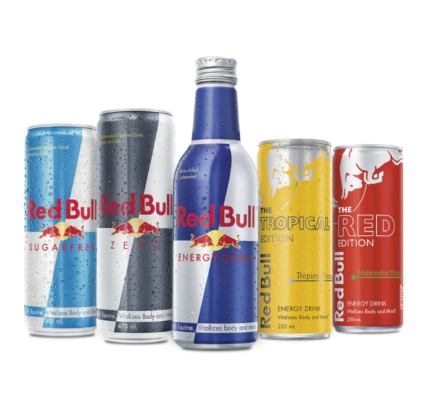Description
Corn (Zea mays) happens to be a very popular feedstock for ethanol production due to its abundance and also relative ease of conversion to ethyl alcohol (ethanol). Corn and other high-starch grains have been converted into ethanol for thousands of years, yet only in the past century has its use as fuel greatly expanded. Conversion includes grinding, cooking with enzymes, fermentation with yeast, and distillation to remove water. For fuel ethanol, two more steps are included: using a molecular sieve to remove the last of the water and denaturing to make the ethanol undrinkable.
Corn happens to be one of the world’s most productive likewise dominant crops. It is grown extensively as food for both humans and livestock, as a biofuel, and as a crude material in industry.
Current Potential for Use as a Biofuel
Corn grain makes a good biofuel feedstock due to its starch content and its comparatively easy conversion to ethanol. Infrastructure to plant, harvest, and store corn in mass quantities benefits the corn ethanol industry. Unlike sugarcane, in which squeezed sugar water can be directly fermented, corn starch must be cooked with alpha and gluco-amylase enzymes to convert the starch to simple sugars. Cellulosic feedstocks are even more recalcitrant and require time and energy to convert to simple sugars. Under the renewable fuel standard set by Congress in 2007 (RFS-2), grain-based ethanol can make up 15 billion gallons of the 36 billion gallon-per-year requirement. Corn-based ethanol production capacity in 2009 was 10.6 billion gallons. The addition of idled capacity would increase potential production to 12.5 billion gallons per year (Renewable Fuels Association).
Corn production in the United States reached record highs in 2009 with 13.2 billion bushels from 86.5 million acres (National Ag Statistics Service). Using the current corn-to-ethanol conversion of 2.8 gallons of ethanol from a bushel of corn, total U.S. corn production could result in approximately 37 billion gallons of ethanol, which would provide approximately 26% of our 137 billion gallon-per-year gasoline consumption (Energy Information Administration). However, using all of our corn for ethanol is neither realistic nor necessary and has not been proposed. Creating the 15 billion gallons required under the RFS-2 would call for 5.4 billion bushels or about 41% of our 2009 corn crop. Although this percentage seems rather high, one-third of the weight and 100% of the nutritional content of corn entering an ethanol dry mill biorefinery is returned to the feed market as distillers grains. These distillers grains can be used to replace corn in the diets of cattle, swine, and poultry. When this replacement is calculated into the overall consumption figures, it lowers the number to 27% of our 2009 corn crop, or only 3.6 billion bushels of corn to produce the 15 billion required gallons. Throughout history, the United States has seen a steady increase in the yields of both corn and ethanol production. It is very likely that the United States will be able to increase corn ethanol production without expanding to new acres and still have plenty of corn remaining to meet other domestic use and export demands.
Biology and Adaptation
Corn (Zea mays) originated in Central America with the first domestication, purported to be in the Tehuacan Valley of Mexico. Spreading throughout the North American continent, corn became an important crop for early Americans. At its peak in 1917, 111 million acres of corn were planted in the United States (Gibson and Benson, 2002). Today corn is planted on every continent in the world except Antarctica and is grown throughout many states in the United States, ranging from southern North Dakota to Texas and eastward to New York. Corn is well adapted to growing in temperatures between 50° and 86°Fahrenheit (Hoeft et al., 2000). To produce grain, corn will use approximately 22 to 28 inches of water, which requires 12 to 20 inches of rainfall or irrigation during the growing season (Al-Kaisi, 2000; Hoeft et al., 2000; Kranz et al., 2008). Despite popular misconceptions, nearly 90% of U.S.-grown corn is fed by natural rainfall only, with no irrigation necessary. Many parts of the upper Midwest are well suited to grow corn, and this area is sometimes referred to as the Corn Belt.
Production and Agronomic Information
Corn in the upper Midwest is seeded between March and May and harvested between September and November in most years. A majority of corn planted today has genetic resistance to some weeds, insects, and plant pathogens. Corn hybrid resistance to various pests and pathogens is a result of biotechnology and plant breeding. Biotechnology traits aid producers in the control of weeds and insects, greatly reducing the amount of pesticides entering the environment (Brookes and Barfoot, 2006). Much of the Corn Belt rotates with other crops, such as soybeans or wheat, to break weed, insect, and disease cycles as well as to reduce the cost of production. Corn responds best to highly fertile soils with supplemental fertilizer applied in most years. Fertilizer may be inorganic chemical fertilizer or manure.
Major nutrients required by corn are nitrogen, phosphorus, and potassium. Inorganic nitrogen fertilizer production is very energy-intensive and as a result, nitrogen fertilizer represents nearly 30% of the energy inputs in corn production (BESS, 2009). Other major inputs include diesel fuel for tractors, transportation, irrigation, and electricity for irrigation and grain storage.
Production Challenges
Corn production has been blessed with nearly 100 years of infrastructure build-up and research. Farmers have great knowledge and experience in growing corn. This infrastructure and grower intelligence make corn a natural crop for expanded uses such as ethanol. Yet high production costs and high inputs make corn a very intensive crop. Other bioenergy crops may be less intensive and require fewer inputs. The cost versus profit per acre needs to be compared, as economics is a major driver in deciding which crop is best. Growing another crop on an acre where corn could be grown carries risks that may include a new cropping system; no harvest, transport, or storage infrastructure; or no commodity market to fall back on if the biofuel market fails.
Estimated Production Costs
Production costs vary widely depending on tillage, irrigation, yield goal (soil fertility), spraying schedule, seed selection, and rotation. A sample corn budget with rain-fed, no-till, biotech seed, corn/soybean rotation, and 120 bushel yield goal would include a total cost of $211 per acre. If overhead – crop insurance, land, taxes – is included, the total is $305 per acre. Production costs increase to over $600 on irrigated fields with continuous corn (Klein and Wilson, 2010)

















